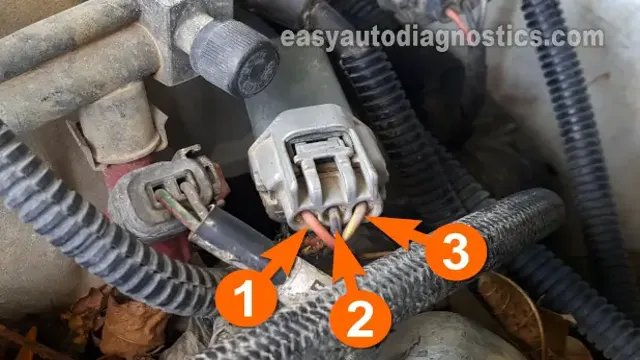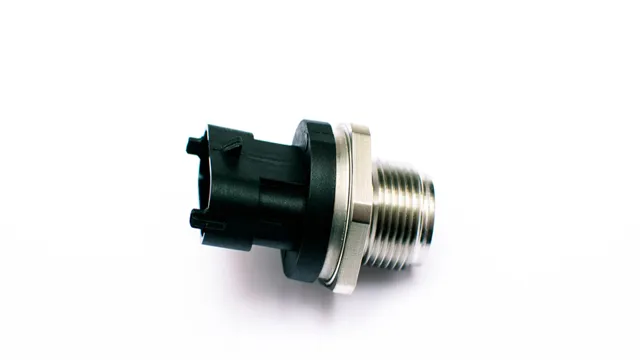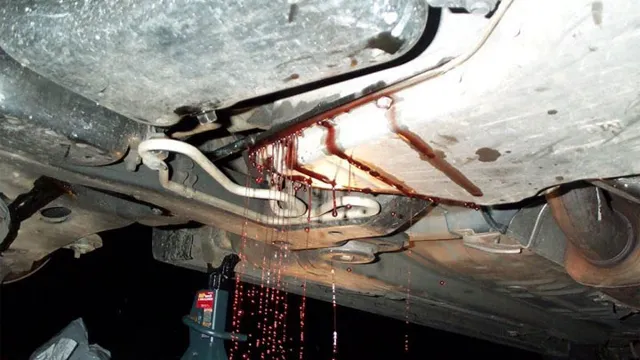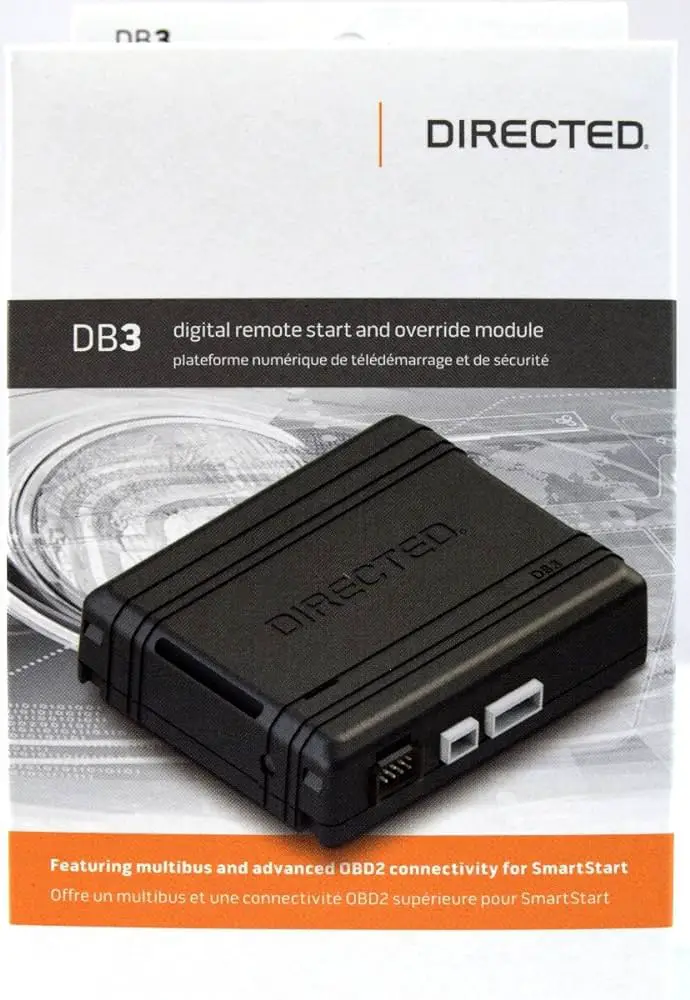Rev Up Your Engine: A Comprehensive Guide on How to Check Cam Position Sensor Like a Pro!
Have you noticed that your car is having trouble starting or is stalling out? These issues could be caused by a faulty cam position sensor. The cam position sensor is an important component of your car’s engine management system, responsible for guiding the fuel injection and ignition systems. If it’s not working correctly, it can cause a variety of problems, including decreased power and fuel efficiency.
In this complete guide, we’ll dive into what the cam position sensor is, how it works, signs that it needs to be checked, and how to go about checking it. So buckle up, and let’s get started on making sure your car is running smoothly.
What is a Cam Position Sensor?
If you’re experiencing issues with your vehicle’s timing or ignition system, it could be a problem with the cam position sensor. This piece of equipment is responsible for monitoring the position of the camshaft and sending that information to the engine control module. In turn, the engine control module uses that information to determine how the engine should operate.
If the cam position sensor is malfunctioning or faulty, it can cause a variety of issues including misfires, stalling, and poor fuel efficiency. To check the cam position sensor, you can use a multimeter to test the voltage that’s being sent from the sensor to the engine control module. If the voltage is outside the specified range, it may need to be replaced.
It’s important to address any issues with the cam position sensor promptly to prevent further damage to your vehicle.
Definition
A cam position sensor is a crucial component in modern engines that helps in determining the position of the camshaft. The camshaft is responsible for opening and closing the engine valves, which in turn controls the amount of air and fuel mixture that enters the engine. The sensor works by detecting the angular position of the camshaft and relaying that information to the engine’s computer, which then adjusts various parameters of the engine’s performance.
A faulty cam position sensor can result in reduced engine performance, increased emissions, and even engine damage. Therefore, it is essential to have the sensor periodically checked and replaced when necessary. By ensuring the proper functioning of the cam position sensor, drivers can improve their vehicle’s overall performance and fuel efficiency.

Importance in the Car Engine
A cam position sensor is a vital component of a car engine that helps monitor the position and speed of the camshaft. It works by detecting the rotation of the camshaft and sending that information to the car’s computer system. The computer then uses this data to precisely control the engine’s fuel injection and ignition timing, which in turn ensures that the engine runs smoothly and efficiently.
Without the accurate information provided by the cam position sensor, the engine could misfire or even stall, which could be dangerous while driving. In short, the cam position sensor plays a crucial role in ensuring the proper functioning of a car engine, and it’s important to ensure that it’s functioning correctly. Regular maintenance checks by a professional mechanic can help ensure that the sensor is in good condition and working as it should.
Signs of a Faulty Cam Position Sensor
Checking a faulty cam position sensor is vital, as it can lead to poor engine performance and even a complete breakdown. One obvious sign of a malfunctioning sensor is when the engine won’t start or suddenly cuts off. Other symptoms may include rough idling, reduced acceleration, and decreased fuel efficiency.
If you’re experiencing any of these issues, it’s essential to check the cam position sensor using a multimeter or an oscilloscope. The simplest way to test it is by checking the sensor’s resistance, which should fall within the manufacturer’s suggested range. If the resistance is outside the acceptable range, then chances are the sensor is faulty and needs to be replaced.
In conclusion, regular check-ups and maintenance of your car’s sensors, including the cam position sensor, can prevent costly repairs and keep your vehicle running smoothly on the road.
Check Engine Light
When your check engine light comes on, it could indicate a problem with your car’s cam position sensor. This sensor is responsible for monitoring the position of the camshaft and determining the optimal time for the fuel injectors to fire. A faulty cam position sensor can cause a range of issues, including difficulty starting the engine, reduced fuel efficiency, and rough idling.
You may also notice your engine misfiring or stalling while driving. These signs can be alarming, but the good news is that replacing your cam position sensor is a relatively simple and affordable fix. If you suspect your sensor is faulty, it’s best to have it checked by a professional to avoid potentially damaging your engine further.
Regular maintenance checks can also help prevent issues with your cam position sensor, ensuring smooth, reliable performance. Remember, your car is a complex machine that requires regular attention to keep it running its best.
Engine Misfires or Stalling
If your engine is misfiring or stalling, it could be a sign of a faulty cam position sensor. This sensor is responsible for telling the engine’s computer where the camshaft is in its rotation. When it malfunctions, your engine can become erratic, causing it to stall or misfire.
You may also notice a decrease in power or acceleration when driving. One way to tell if your cam position sensor is failing is to look for a check engine light on your dashboard. But, even if the light is not on, it’s better to have the sensor checked if you suspect there may be an issue.
Replacing the sensor is usually a quick and straightforward job for a mechanic. If left unaddressed, a faulty cam position sensor can cause serious damage to your engine, so it’s worth getting it taken care of sooner rather than later.
Difficulty Starting the Car
If you’re having trouble starting your car, it could be due to a faulty cam position sensor. This component is responsible for providing information on the position of the camshaft in the engine, which helps the computer to determine the optimal timing for ignition and fuel injection. If the sensor is failing, it may cause the engine to misfire or fail to start altogether.
Another sign of a bad cam position sensor is that the engine may struggle to accelerate or may stall out when running at low speeds. These symptoms are often indicative of a larger problem with the engine, so it’s important to have your car inspected by a qualified mechanic if you’re experiencing any of them. Replacing the cam position sensor is typically a straightforward process, but it’s important to use a high-quality replacement part for best results.
By addressing this issue promptly, you can avoid the frustration and expense of a more serious engine problem down the line.
How to Test the Cam Position Sensor?
If you’re experiencing issues with your engine’s performance, it could be due to a faulty cam position sensor. The cam position sensor is responsible for determining the position of the camshaft in relation to the engine’s pistons. Without this information, the engine won’t be able to function properly.
Fortunately, testing the cam position sensor is relatively easy. You can start by using a voltmeter to check for any inconsistencies in the sensor’s voltage output. If the voltage output is too low or too high, it’s a good indicator that the sensor needs replacing.
Additionally, you can perform a visual inspection to check for any physical damage or signs of wear and tear. If you’re still unsure whether the cam position sensor is the cause of your engine’s problems, it’s best to take it to a mechanic to diagnose the issue. By taking the time to check and replace a faulty cam position sensor, you’ll ensure that your engine runs smoothly and efficiently.
Step-by-Step Guide
Testing the cam position sensor is essential to ensure that it is working correctly and providing accurate information to the vehicle’s engine control module. To test the cam position sensor, you will need a few tools, including a multimeter, a wiring diagram for your car’s make and model, and a friend to help you with some of the tests. Firstly, locate the cam position sensor on your vehicle, which is typically located near the cylinder head or timing cover.
Next, disconnect the electrical connector from the sensor and use the wiring diagram to find the appropriate pins for testing. Then, use the multimeter to check the resistance of the sensor, ensuring that it falls within the manufacturer’s specified range. You can also test the sensor’s voltage output using a back-probing technique while cranking the engine with the help of a friend.
If the tests indicate that the sensor is faulty, it is essential to replace it to prevent engine performance issues and potential damage. Testing your cam position sensor regularly can help prevent costly repairs, ensuring your vehicle runs smoothly.
Using a Multimeter
When it comes to testing a cam position sensor, a multimeter comes in handy. First, disconnect the sensor from the harness and set the multimeter to measure resistance. Then, place the probes on the two terminals of the sensor.
The resistance value should be within the manufacturer’s specified range. Next, set the multimeter to measure voltage and reconnect the sensor to the harness. Turn on the ignition without starting the engine and carefully put the red probe on the positive terminal of the sensor connector.
Put the black probe on the negative terminal of the connector and check for voltage reading. If there’s no voltage, it means the sensor is faulty and may need replacing. Testing your cam position sensor with a multimeter is essential in diagnosing any problems.
If you notice any symptoms like sluggish engine performance and unusual noise from the engine, it may be time to test your sensor. The process is simple and straightforward, and it could save you lots of time and money if you can diagnose the problem correctly. By following the guidelines above, you can feel more confident in your vehicle’s performance and have peace of mind on the road.
So, go ahead and try it out for yourself today!
Consulting a Mechanic
If you’re experiencing issues with your engine’s performance, the culprit might be a faulty cam position sensor. To test if this is the case, you will need a multimeter and a voltage regulator. First, locate the sensor near the camshaft and unplug it.
Then, attach the multimeter to the sensor’s terminals and set it to the AC voltage range. Next, connect the voltage regulator to the car battery and set it to around 12 volts. Turn on the car to activate the sensor and check the voltage reading on the multimeter.
If the voltage is within the manufacturer’s recommended range, then the sensor is functioning correctly. If not, then the sensor needs to be replaced. Consulting a mechanic is recommended to ensure that the sensor is correctly installed and calibrated for optimal performance.
Remember, a faulty cam position sensor can impact your engine’s overall performance, leading to reduced fuel efficiency and acceleration. So, it’s essential to pay close attention to any warning signs and address the issue promptly.
Replacing a Faulty Cam Position Sensor
If you’re experiencing engine issues like sporadic idling and stalling, you may have a faulty cam position sensor. To check, start by locating the sensor, which is typically near the camshaft. Then, remove the sensor and inspect it for any damage or wear.
If it looks fine, use a multimeter to check for electrical continuity. If the sensor doesn’t provide a reading, it’s time to replace it. When installing the new sensor, make sure it’s properly aligned and securely fastened to prevent any future issues.
And always remember to test the new sensor to verify it’s functioning properly before closing everything up. By following these steps, you can rest assured that your cam position sensor has been accurately diagnosed and replaced, and your engine is back to running smoothly.
DIY vs Mechanic
When it comes to replacing a faulty cam position sensor, the decision to do it yourself or take it to a mechanic can be a challenging one. On the one hand, doing it yourself can save you money, but on the other hand, if you’re not experienced in auto repairs, you can risk doing more harm than good. If you do decide to attempt the repair yourself, make sure to consult your car’s manual and do your research before getting started.
It’s also important to have the right tools and take your time to avoid any mistakes. On the other hand, taking it to a mechanic can offer you peace of mind knowing that the repair will be done correctly. However, it can also be costly, especially if you’re paying for labor in addition to the cost of the new sensor.
Ultimately, the decision comes down to your level of skill and comfort with handling auto repairs.
Cost of Replacement
If your car is displaying symptoms of a faulty cam position sensor, such as stalling or reduced performance, it may be time for a replacement. The cost of replacing this crucial component can vary depending on the make and model of your vehicle and the mechanic you choose to perform the job. On average, though, you can expect to pay between $100 and $250 for the part itself, with additional labor costs tacked on.
While this may seem like a hefty expense, it’s important to remember that the cam position sensor plays a critical role in your engine’s performance, and a malfunctioning unit can have serious consequences for your vehicle’s longevity and overall performance. By investing in a replacement now, you can save yourself from more costly repairs down the line and get back to enjoying a smoothly-running car.
Conclusion
In conclusion, for those looking to check their cam position sensor, it’s all about timing and precision. It’s important to have the right tools, knowledge, and approach to ensure your engine is running smoothly. Don’t just wing it, take the time to properly inspect and diagnose your vehicle.
After all, you don’t want to cam-screw up and end up stranded on the side of the road. So, be cam-patient, be cam-petent, and always cam-check your cam position sensor.”
FAQs
What are the symptoms of a faulty cam position sensor?
Some symptoms of a faulty cam position sensor include engine misfires, decreased fuel efficiency, hesitation or stalling when starting the car, and the check engine light turning on.
Can a bad cam position sensor cause a car not to start?
Yes, a bad cam position sensor can prevent a car from starting. When the sensor fails, the computer may not be able to determine when to fire the spark plugs and inject fuel, which can prevent the engine from starting.
How do you test a cam position sensor?
To test a cam position sensor, you can use a multimeter to measure its electrical resistance or voltage output while the engine is running. You can also use a diagnostic tool to read any trouble codes related to the sensor.
Is it safe to drive with a bad cam position sensor?
It is not recommended to drive with a bad cam position sensor as it can affect the performance and reliability of the engine. It is best to have the sensor replaced as soon as possible to prevent further damage to the vehicle.







